Chapter 3 | FASTER THAN YOUR OWN SHADOW
For me the most genius cast shadow is that of the comic book hero Lucky Luke, who shoots faster than his own shadow! Here I have freely copied the original by artist Maurice de Bevere (1923-2001).
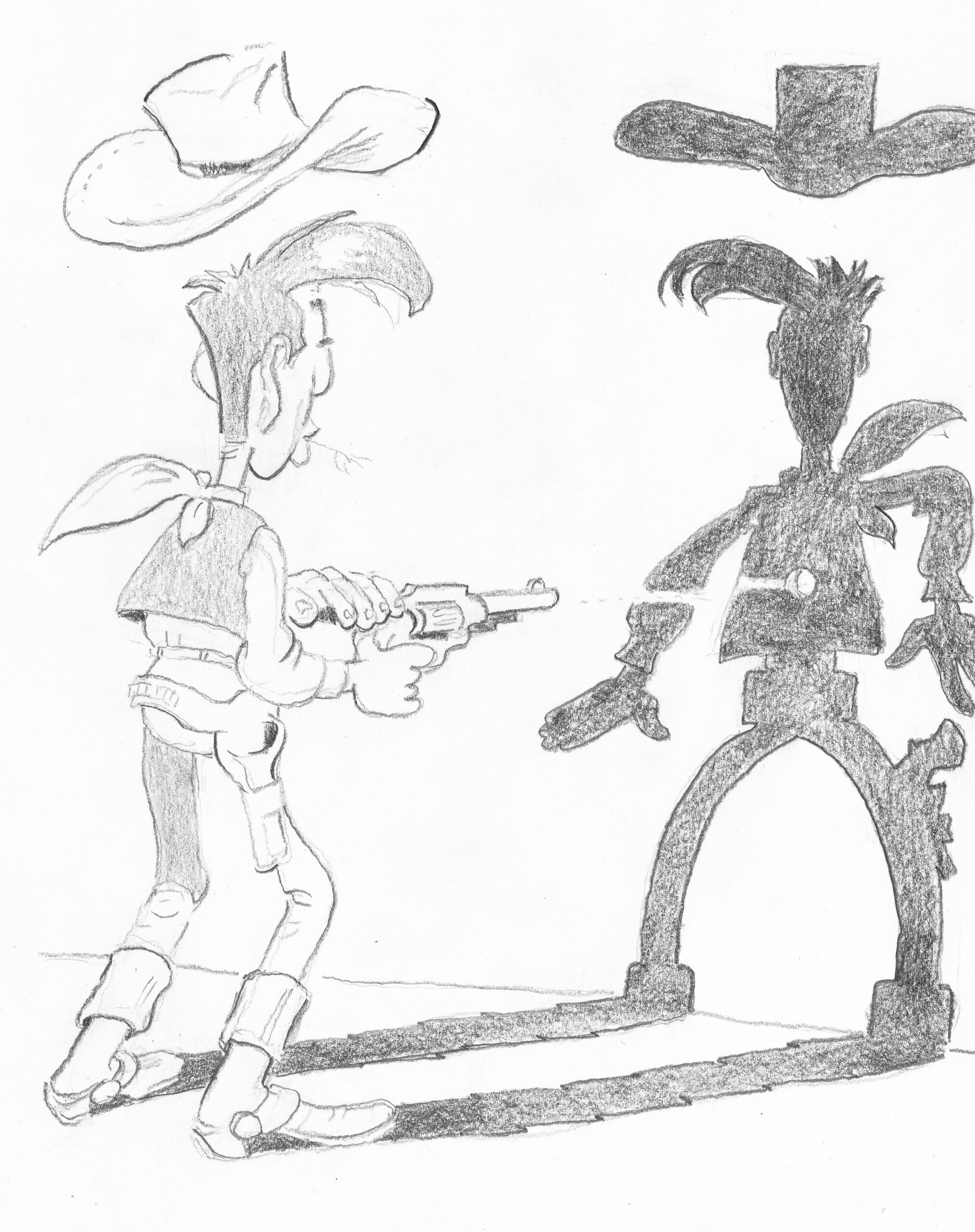
Such a shadow of an object (in this case Lucky Luke) on the ground, wall or other surface is called a cast shadow. The more the light comes from the side (from the sun or a lamp or a candle), the longer the drop shadow. This is shown below with a kind of obelisk. Further away from the obelisk, the drop shadow fades slightly. The edges of a realistic shadow should remain a bit fuzzy (so not with a line as I did with Lucky Luke) .
Exercise 1: draw some obelisks or self-invented figures and try out a few different light directions from the left and right.
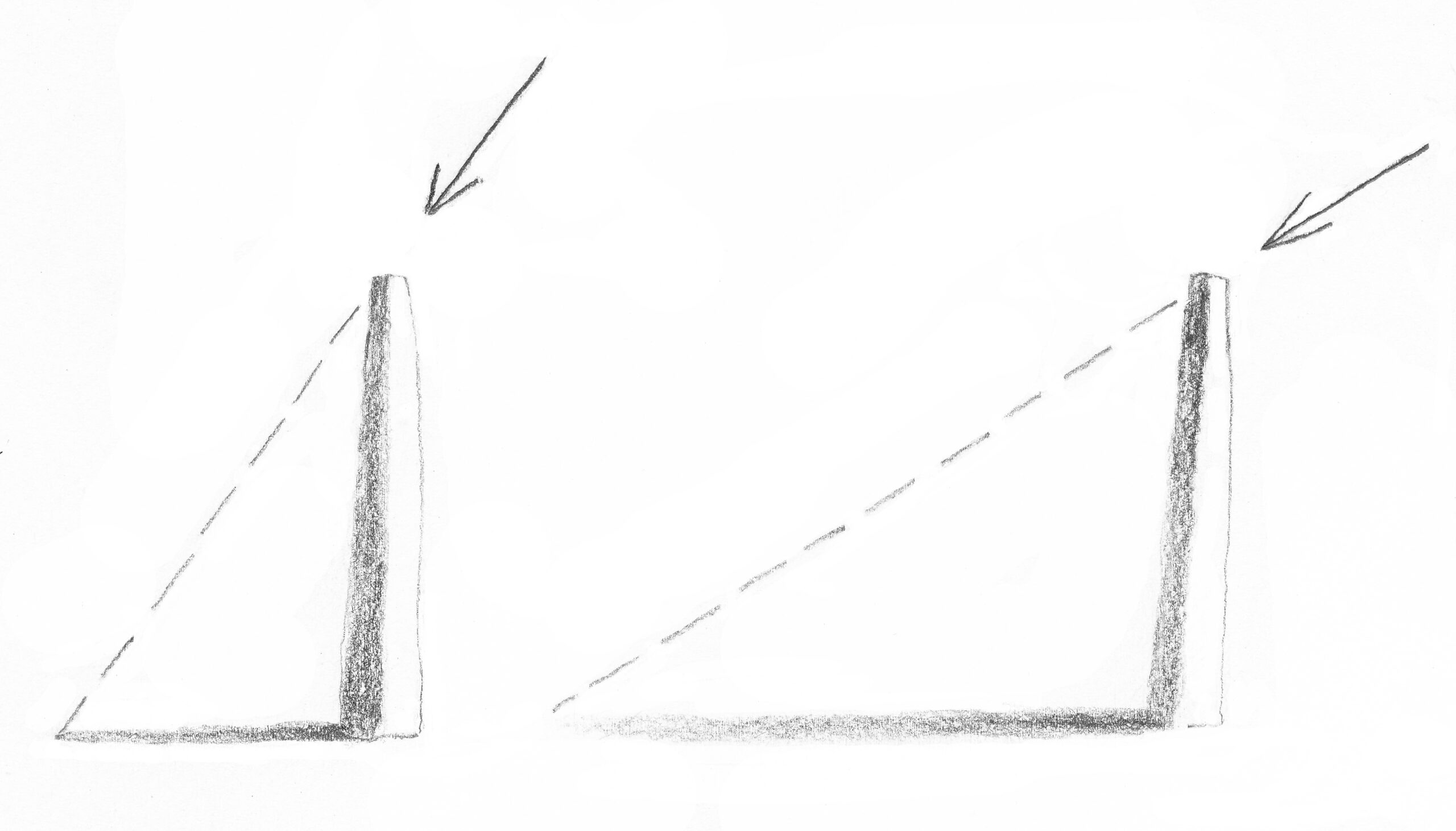
Exercise 2:In winter, the sun is very low, so you get super long shadows. It looks really strange when the sun is shining behind you and you see your legs completely stretched out. A good stretching exercise that requires no effort. Can you also draw a stretched shadow of something or someone?
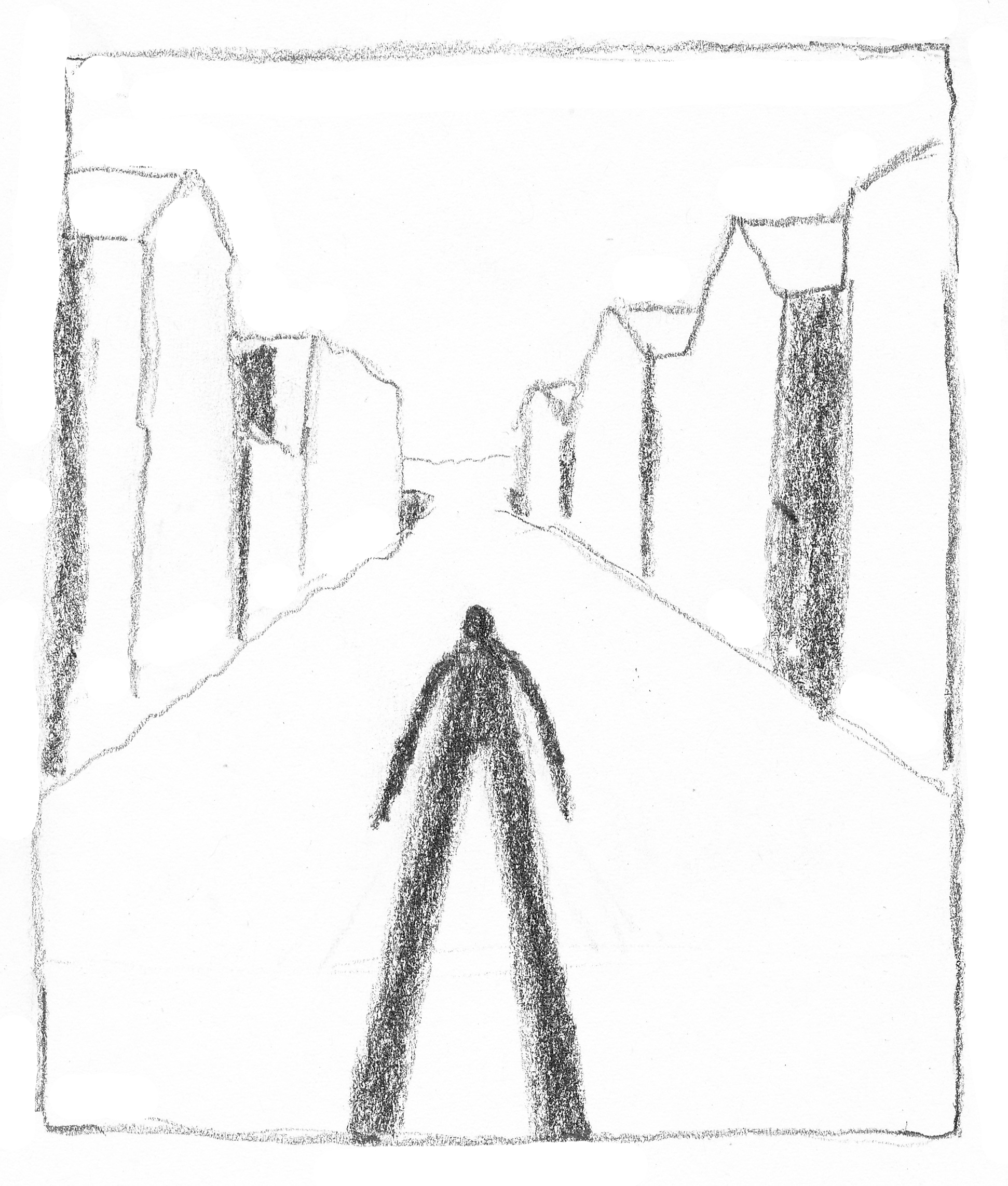
With Lucky Luke, it seemed as if the shadow was crawling up against a wall. In the next two drawings by pupils, the drop shadow even crawls up a staircase. By the way, shadows aren’t always black, they can have a color! Just look at the paintings of the French painter Claude Monet.
Exercise 3: Create a figure whose shadow creeps up a wall, stairs, or something else.
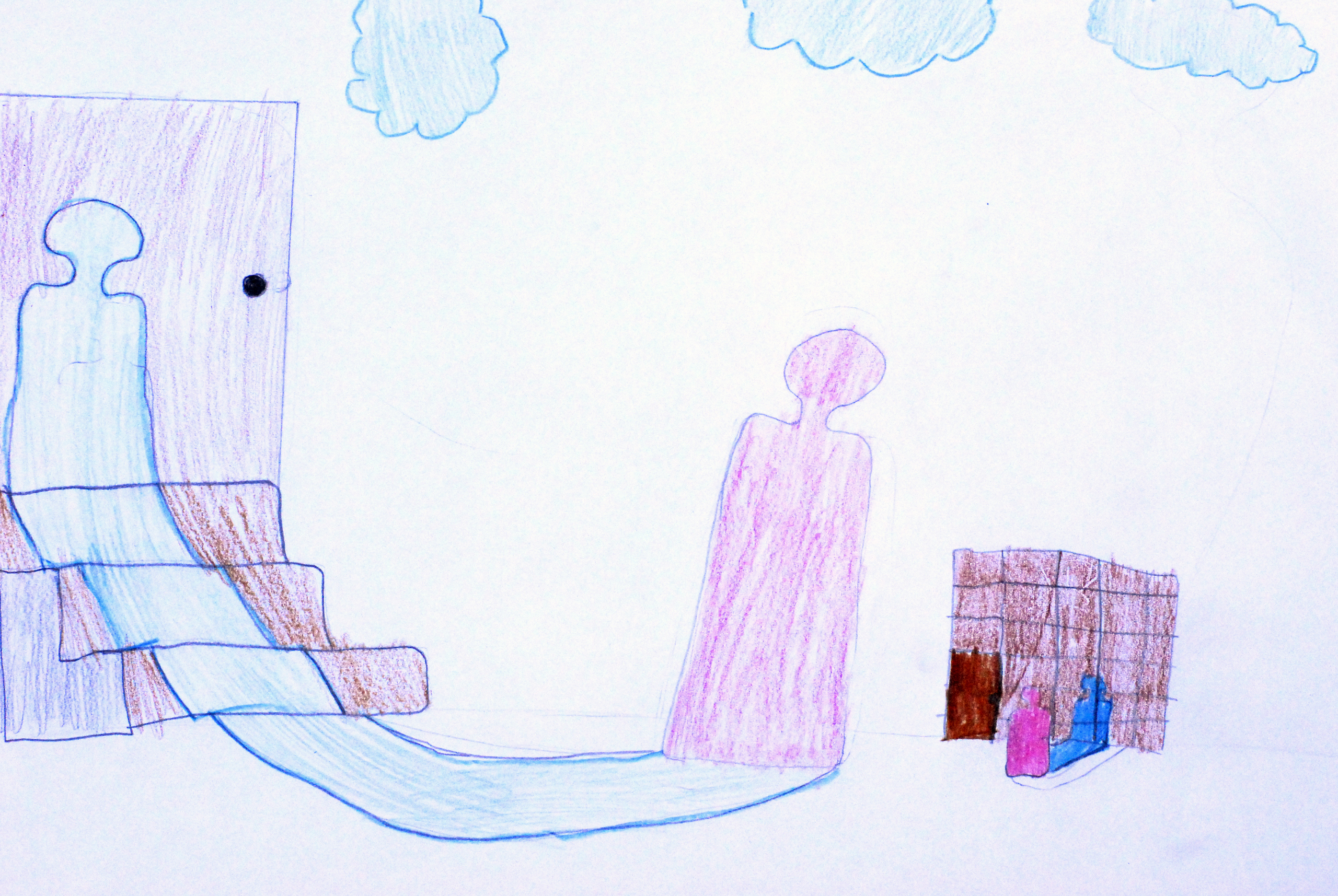
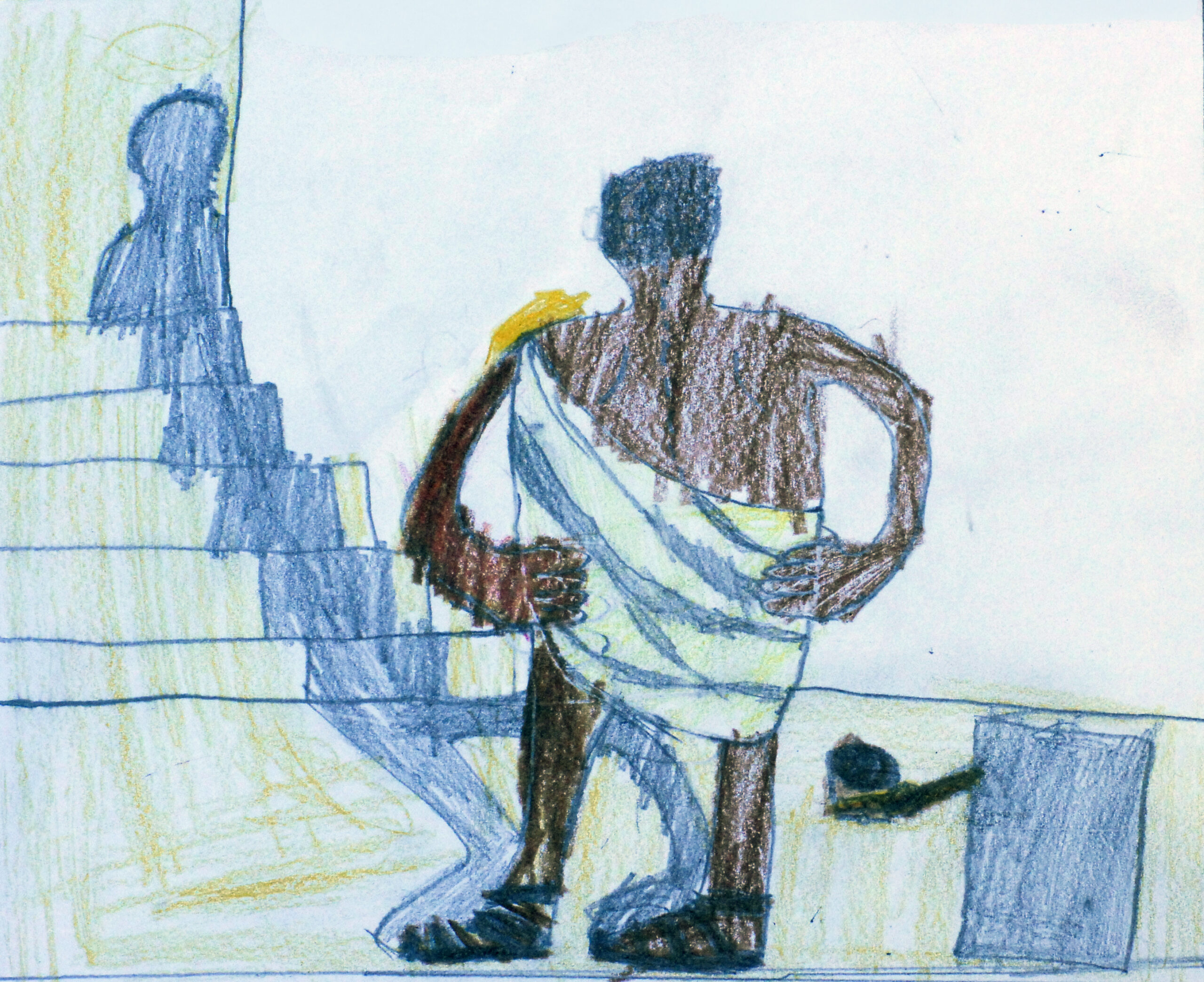
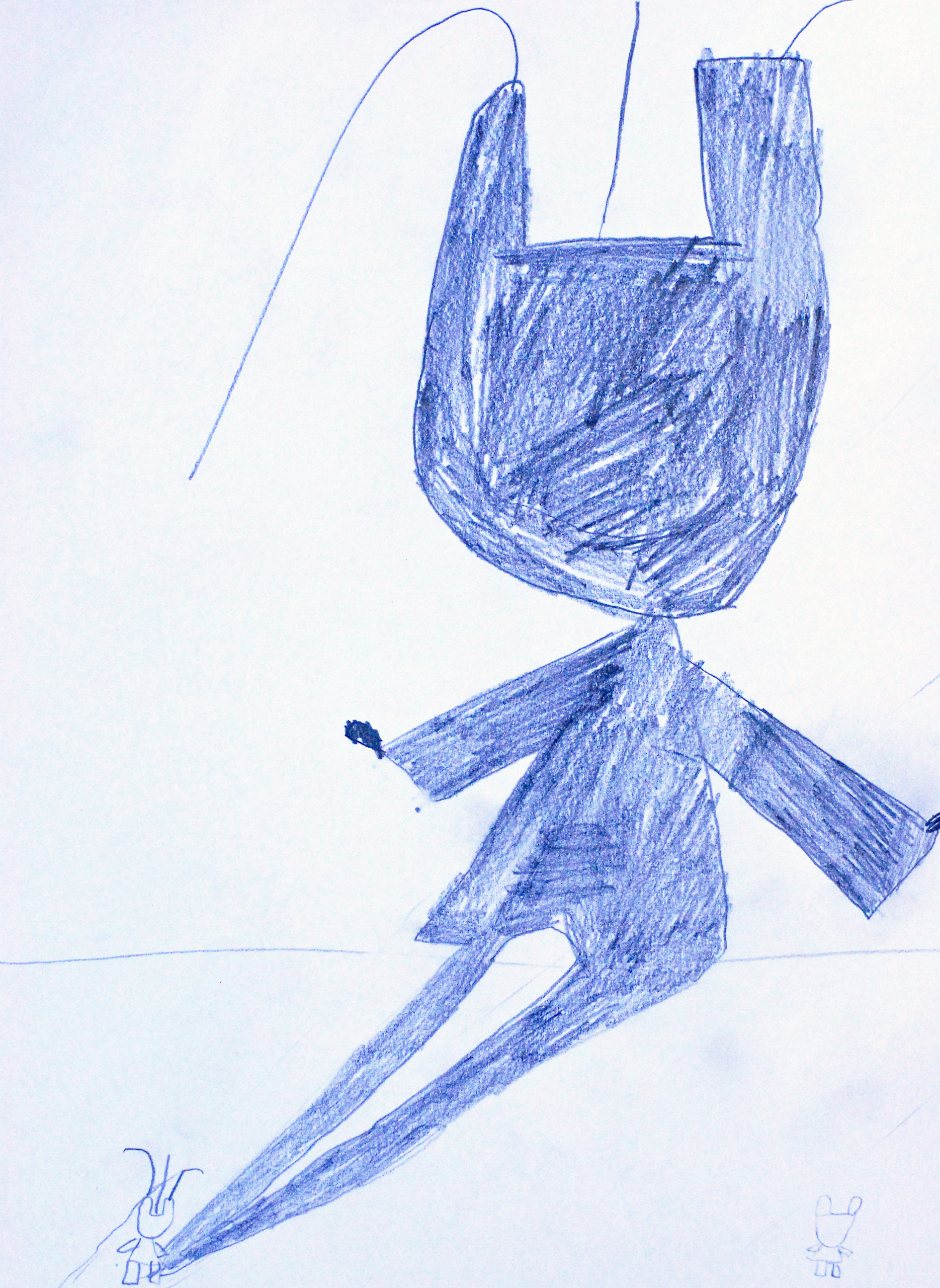
EXTRA: in the following still life only the outlines are drawn. First draw the still life as lightly as possible. Then draw the shadows that arise when the (side) light comes from the left. Draw the shadows on the objects as well as the drop shadows. You will find an elaboration in Chapter 6.
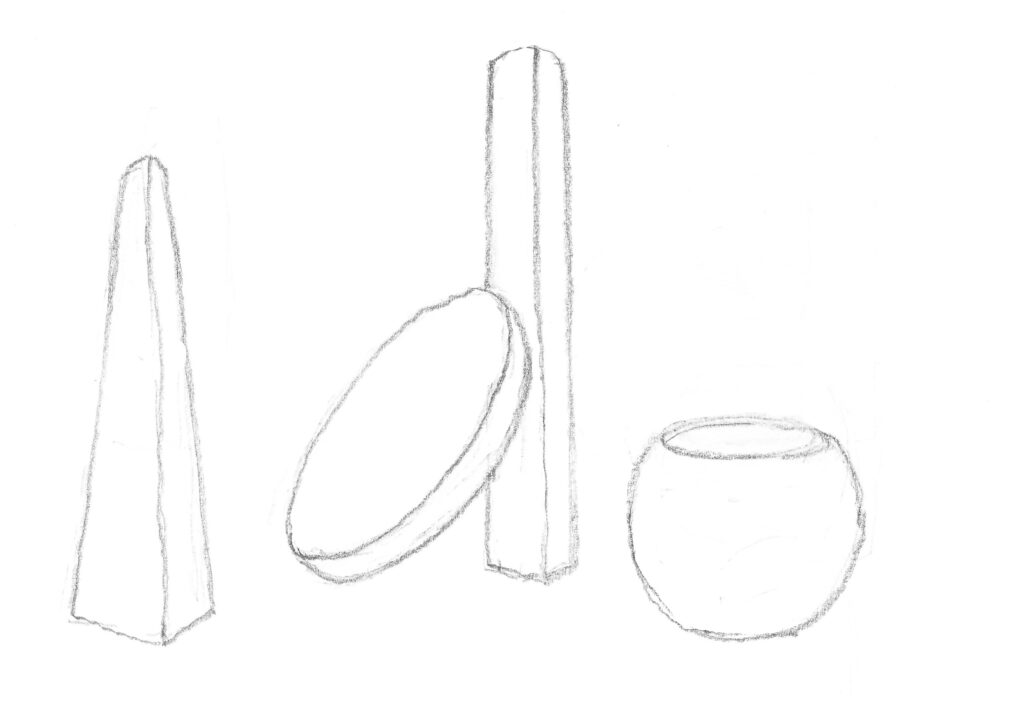
NB: you can download and print out every image from basic pencil and therefore also this still life. You then only have to draw the shadows.